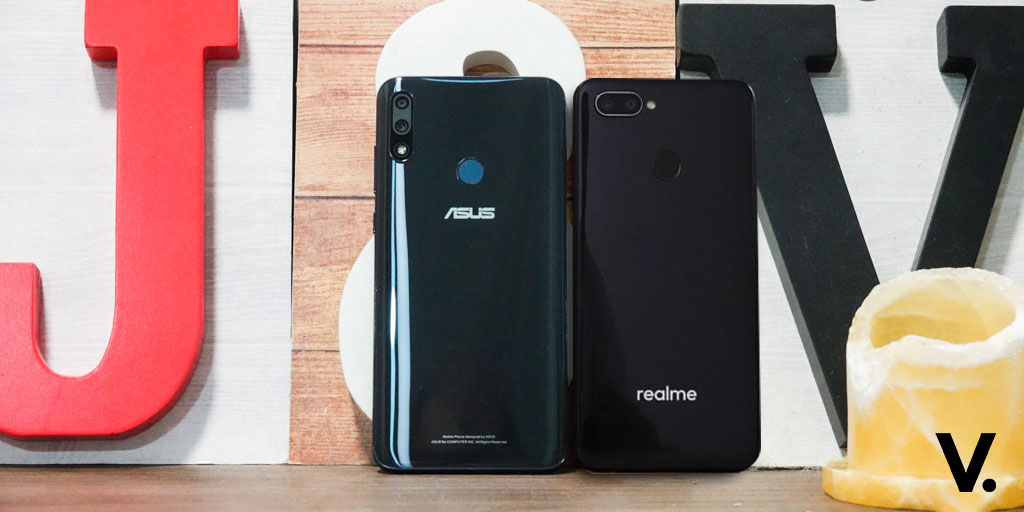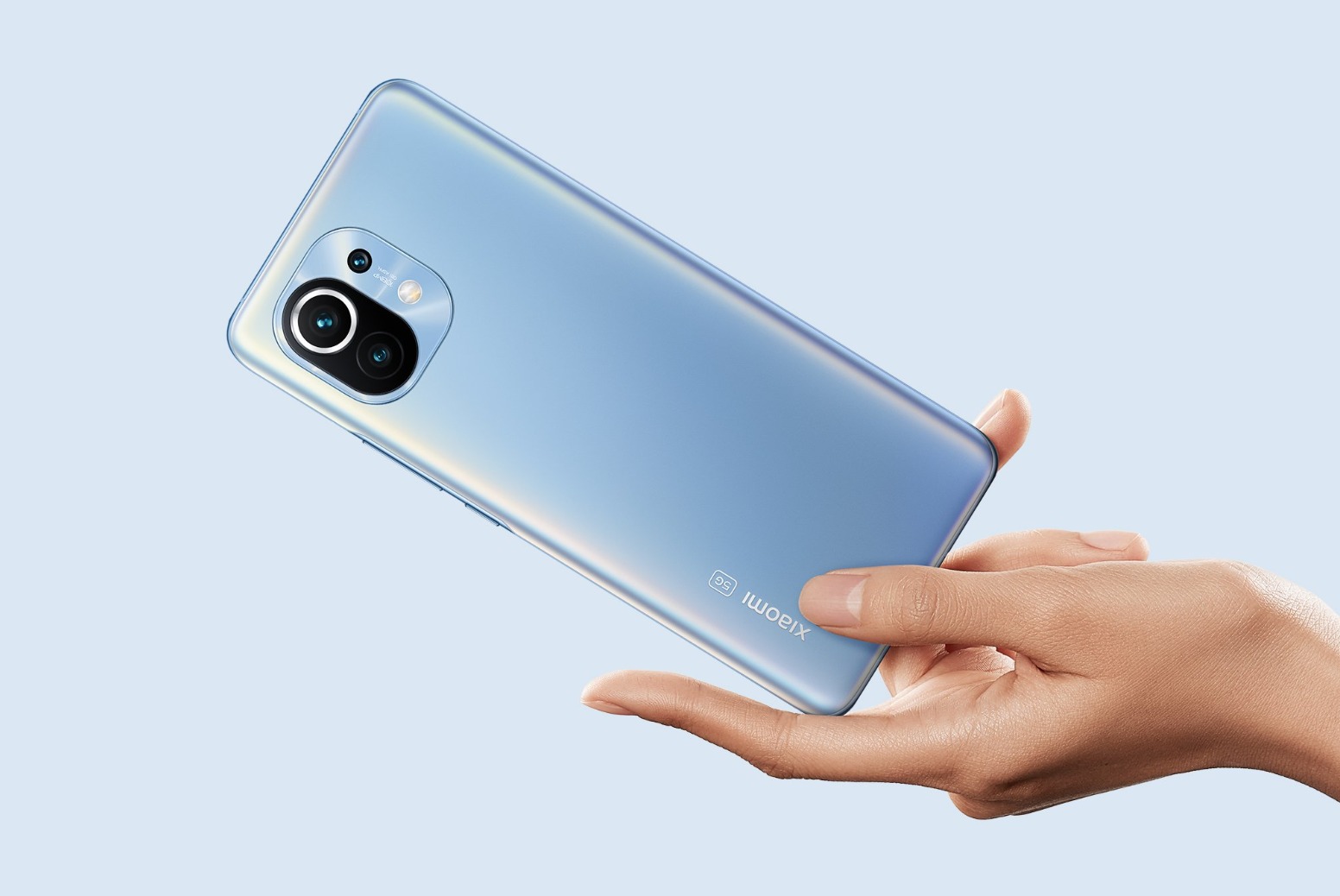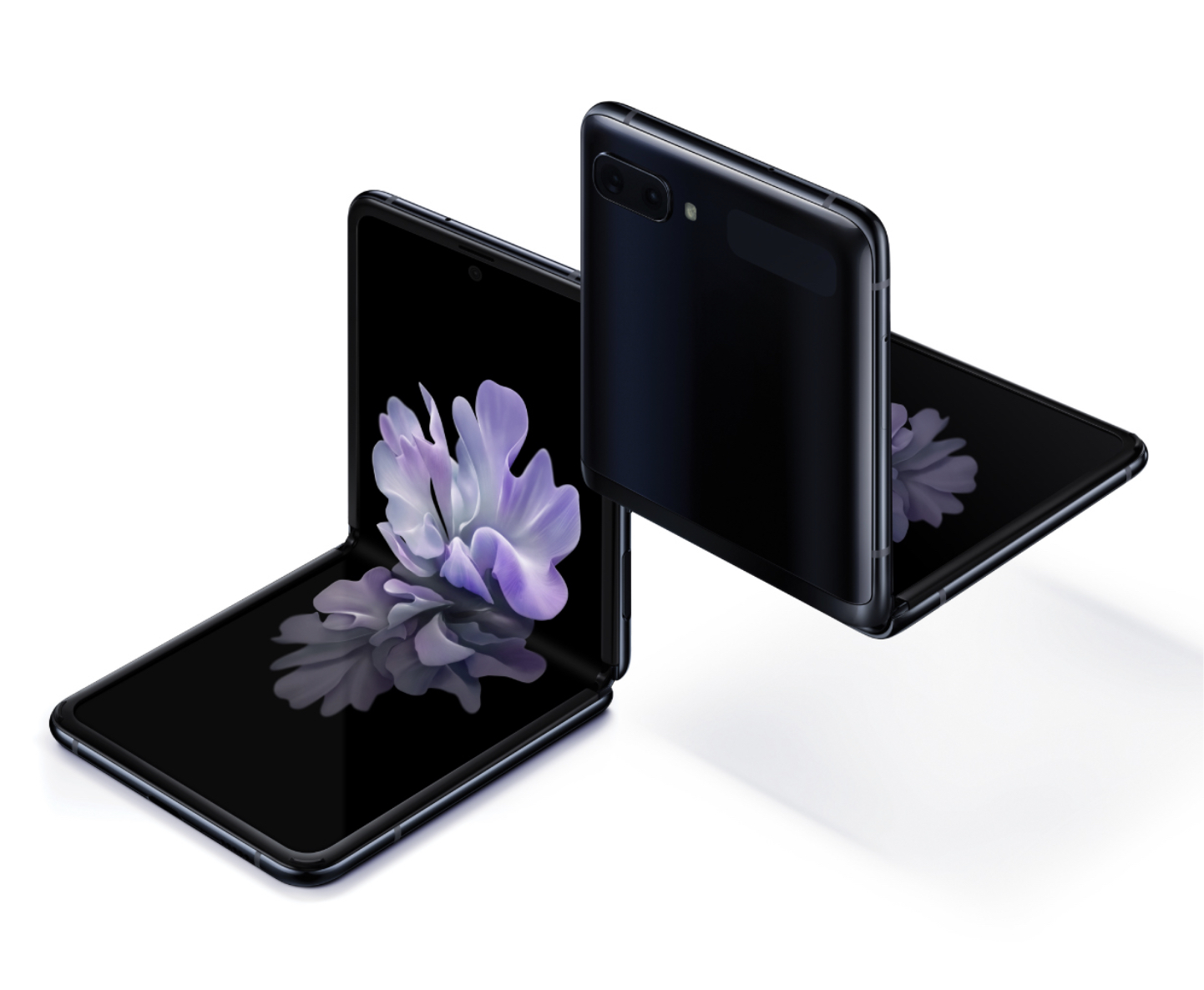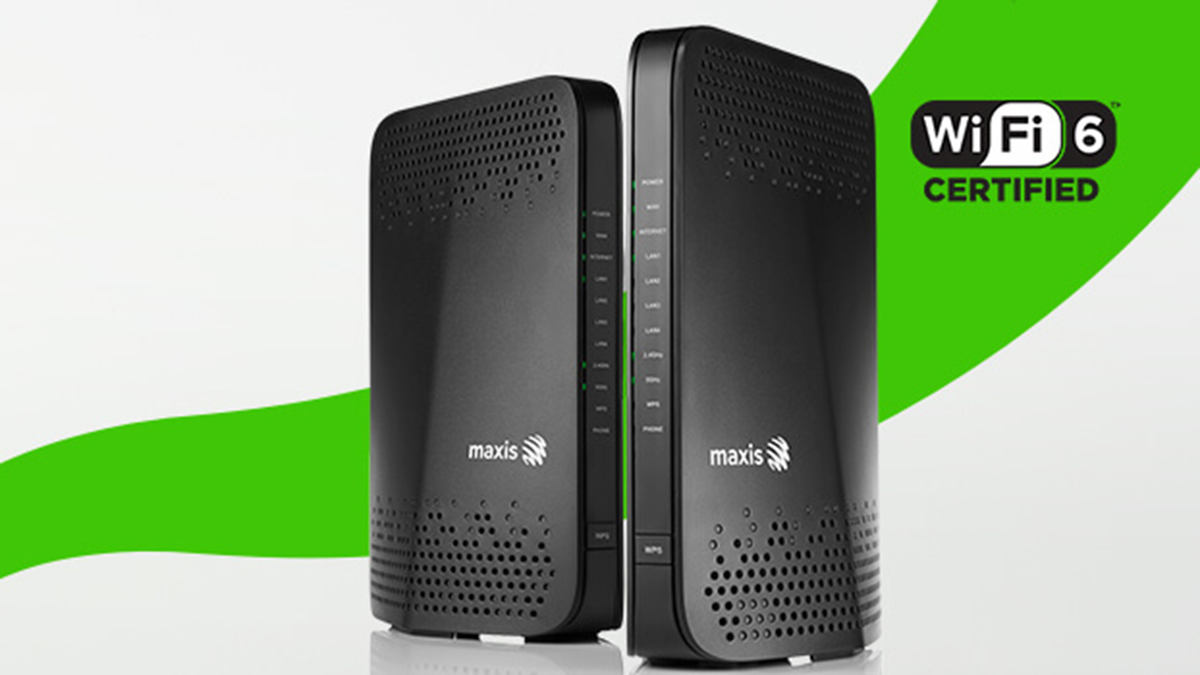By now you should realise that buying a smartphone in 2019 is no longer the same as buying a smartphone back in 2010. With devices like the ASUS ZenFone Max Pro M2 and Realme 2 Pro, you don’t need to spend top dollar for a device that has good specs, design and features.
I had the chance to use both these devices as my daily driver almost back-to-back, so here’s my take on what sets both these very similar devices apart to help you make a more informed decision before parting with your hard earned cash.
Design & Build
To be brutally honest here, in terms of the design, I feel like the predecessors of both these phones did a much better job to stand out. The ASUS ZenFone Max Pro M1 was a tank due to its solid all-metal construction and it definitely felt a little more premium compared to the M2. On the other hand, while the Realme 1 and 2 were already sporting the polycarbonate build, they both had that interesting diamond cut design which has been omitted in the Realme 2 Pro.
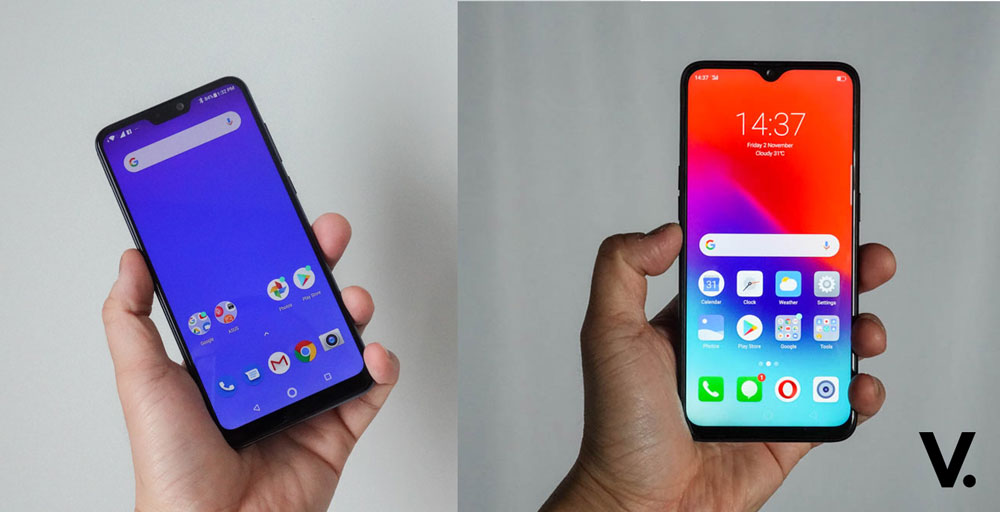 Both these devices won’t wow you with their looks like similarly priced devices from Honor, Vivo or Xiaomi, so if you’re looking for something a little more flashy, to steal a line from Obi-Wan Kenobi, “These aren’t the droids you’re looking for”.
Both these devices won’t wow you with their looks like similarly priced devices from Honor, Vivo or Xiaomi, so if you’re looking for something a little more flashy, to steal a line from Obi-Wan Kenobi, “These aren’t the droids you’re looking for”.
It’s actually quite hard to objectively compare the M2 and the 2 Pro as both are almost twins. Both sport a 6.3-inch FHD+ IPS display, weigh about the same 175g for the M2 and 174g for the 2 Pro and both are 8.5mm thick.
The main differences here is the fact that the M2 has a more traditional notch while the 2 Pro has a dewdrop notch. The 2 Pro also has smaller bezels all around the display, which means you do get more screen real-estate but as mentioned in my review, the dewdrop notch does interfere with some apps and games.
 The M2 does have a leg up against the 2 Pro though in the form of Gorilla Glass 6 that protects the display, this of course means it’s more durable.
The M2 does have a leg up against the 2 Pro though in the form of Gorilla Glass 6 that protects the display, this of course means it’s more durable.
So if I had to choose between the two just on looks alone, my pick would be the ASUS Max Pro M2 because it looks a little more refined due to things like how the rear dual cameras are set and also the neat little slits instead of rounded holes for the bottom firing speaker.
Hardware
When it comes to hardware, both devices are built with the ever reliable Qualcomm Snapdragon 660AIE processor alongside the Adreno 512 GPU. Both devices also come in two similar configurations, meaning 4- or 6GB of RAM and 64GB of internal storage. Realme though, has an ace up its sleeve and that’s the 8GB RAM and 128GB internal storage variant. So if you’re quite a power user, the 8GB version of the 2 Pro is your best bet.
Both devices also come with triple slot trays, meaning you can use dual SIM cards and a microSD card to further expand your memory.
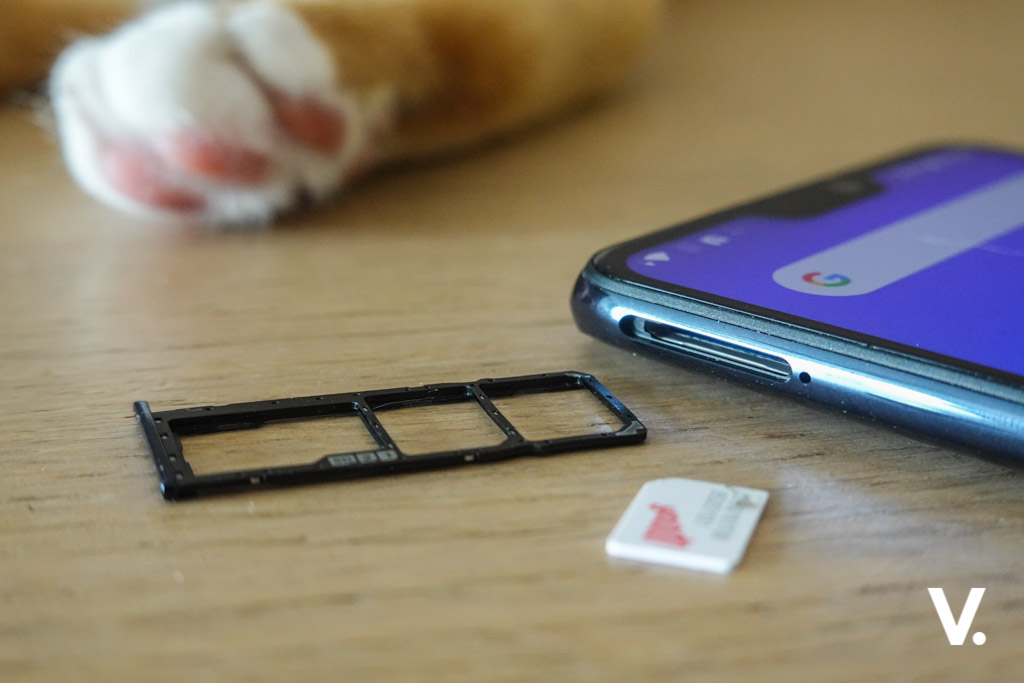 While it may seem as though the 2 Pro has won in the hardware round, the M2 retains that massive 5,000mAh battery, which is a plus for heavy users. The 2 Pro on the other hand, has a 3,500mAh battery to keep everything powered. Both devices don’t support Quick Charge which is a bummer especially for the M2 as charge times can take quite a bit of time.
While it may seem as though the 2 Pro has won in the hardware round, the M2 retains that massive 5,000mAh battery, which is a plus for heavy users. The 2 Pro on the other hand, has a 3,500mAh battery to keep everything powered. Both devices don’t support Quick Charge which is a bummer especially for the M2 as charge times can take quite a bit of time.
Overall, I’d say it’s a draw in the hardware segment as it really depends what you as a user see as a priority, more storage space or more juice throughout the day or two.
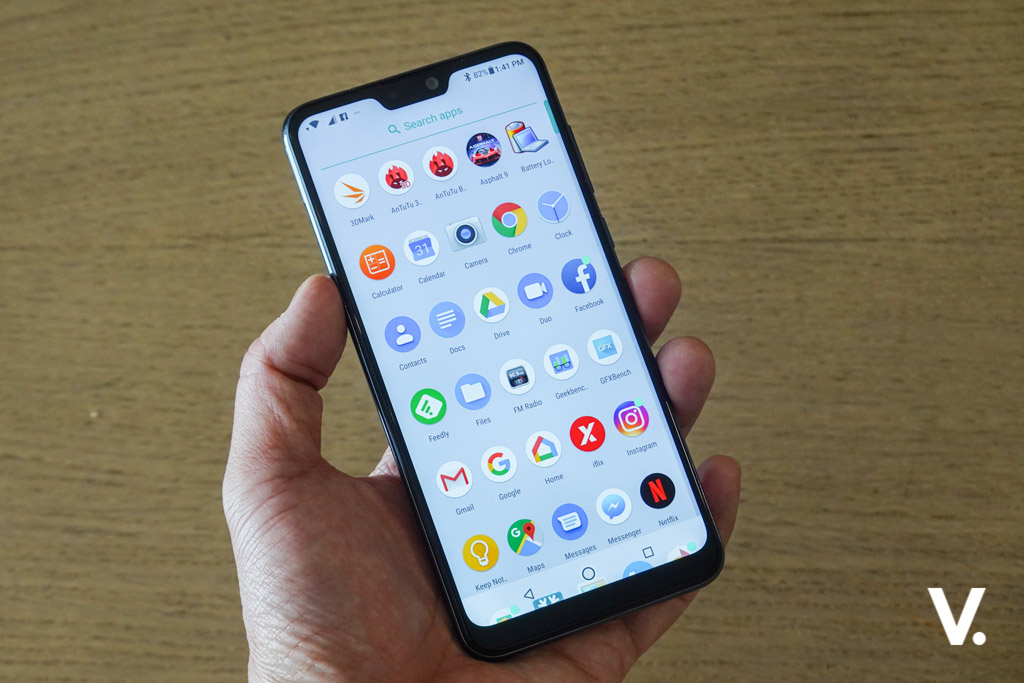 Software
Software
Now we come to the point where I will seem to be very biased, as hands down I prefer the close to vanilla Android software experience of the M2. It’s not an Android One-certified device but that pure Android experience makes it so much smoother to use and though it has some bloatware pre-installed, they can be disabled.
The 2 Pro features OPPO’s ColorOS layered on top of Android and it’s one of those that I don’t really like. As per my review, it also seems to cause the device to lag and stutter every so often.
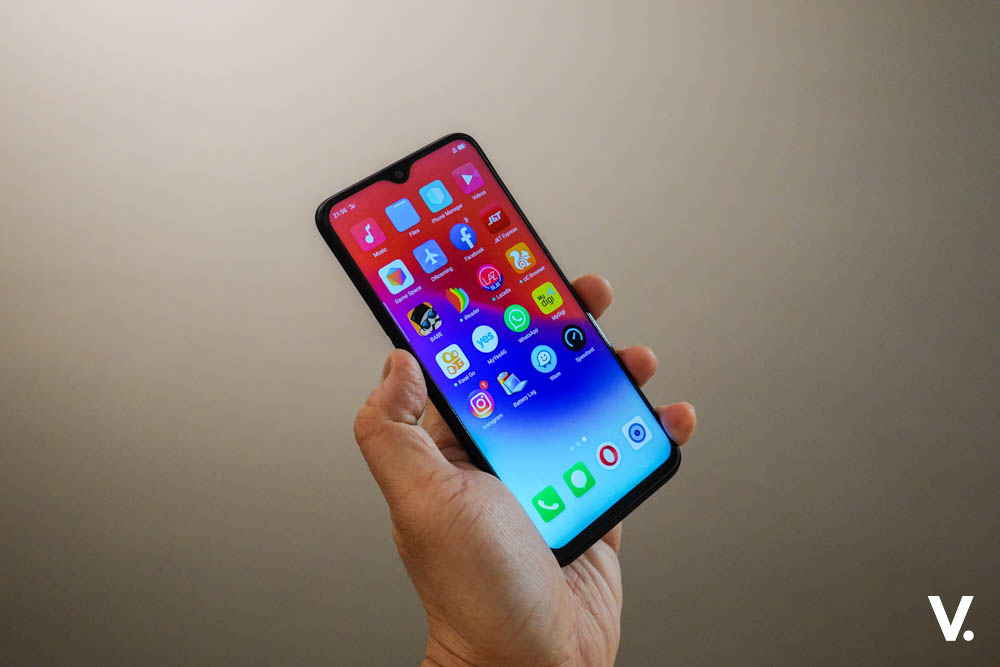 So again, hands down, the M2 is the winner in my book. It would definitely be a lot better though if ASUS went full-on with Android One as they are quite bad with software updates and no one really likes bloatware.
So again, hands down, the M2 is the winner in my book. It would definitely be a lot better though if ASUS went full-on with Android One as they are quite bad with software updates and no one really likes bloatware.
Performance
On to what truly matters, performance! During my time testing them, both devices produced almost similar scores in synthetic benchmarks with the 2 Pro squeezing out slightly higher scores due to its higher RAM. Both also managed to handle my standard suite of games with minimal frame drops or lag.
Real world performance though, the M2’s almost pure Android experience was no doubt a lot smoother and it just hummed along nicely even when I had multiple apps in the background or I was multitasking.
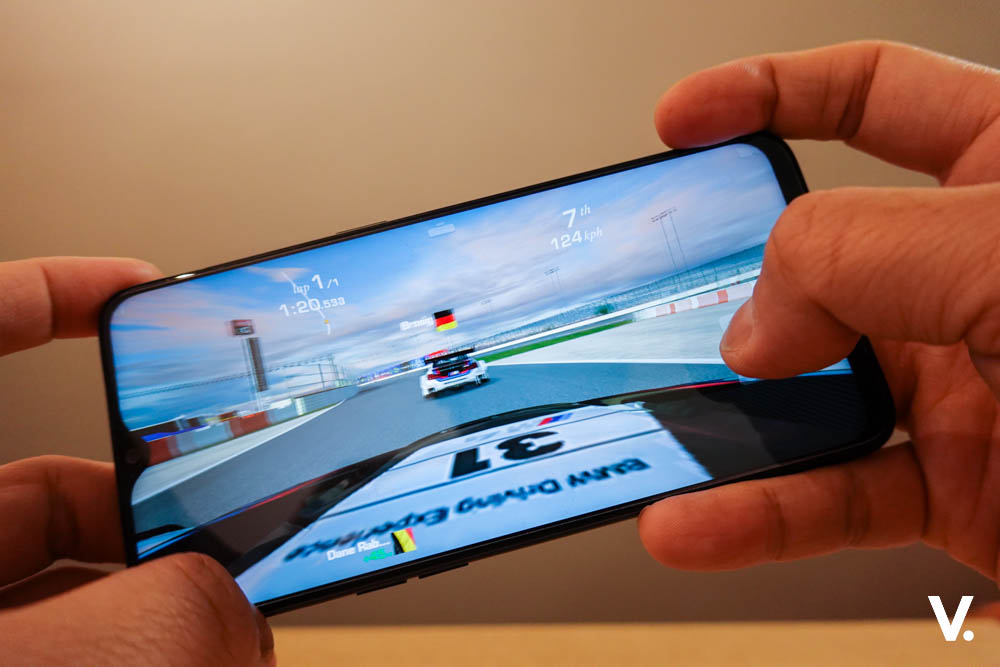
As for battery life, this is where the M2’s massive 5,000mAh battery really shined — easily lasting me for close to a day and a half on a single charge. It’s not as impressive the M1 due to the more powerful processor but it’s still impressive nonetheless, especially on days where I barely touch the phone.
With that said though, the 2 Pro’s battery performance, despite rating 1,500mAh less, is also really good, lasting me a full day and sometimes a little bit more depending on my usage.
Overall, the win goes to the M2 for me as it had a smoother overall user-experience and crazy battery life.
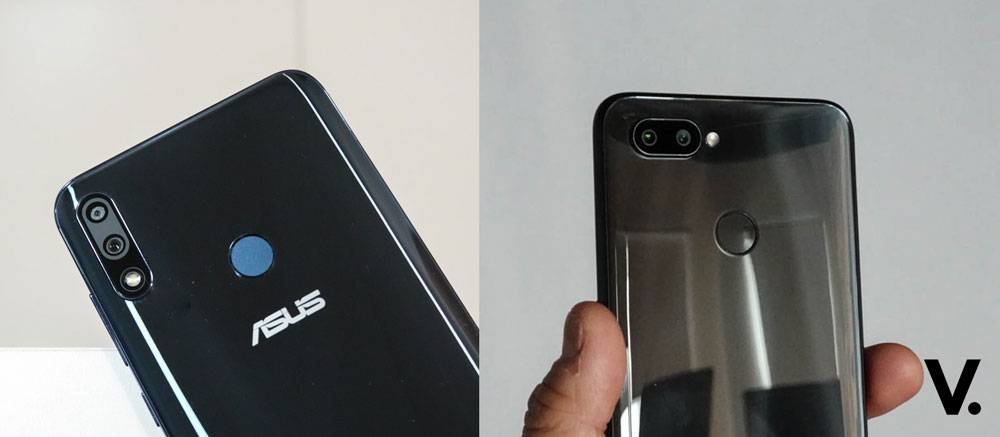 Camera
Camera
Finally, let’s talk about the cameras of both devices. Similar to most devices, there are two cameras on the back of each phone, with the M2 sporting a 12MP Sony IMX486 sensor with f/1.8 aperture and a secondary 5MP depth sensor. The 2 Pro comes with a 16MP Sony IMX398 sensor with f/1.7 aperture and a secondary 2MP depth sensor.

Much like most mid-range devices, both devices are able to produce great photos during the day or in brightly lit conditions. Differences that could be easily discerned is the fact that the M2 produces images with more natural colours while the 2 Pro produces more vibrant and vivid colours. Both devices are on par when it comes to sharpness and details, however, upon closer inspection of zoomed in photos, the 2 Pro does it better.

In low light conditions though, both produce decent photos but the 2 Pro produces images with lower noise. As for portrait mode shots, both produce nicely blurred backgrounds with similar-level edge detection but the M2 had better colours and images were sharper.

As for the selfie shooter, the M2 has a 13MP camera with f/2.0 aperture while the 2 Pro packs a 16MP shooter with f/2.0 aperture. The M2 produces selfies that have better skin tones, details and sharpness. Colours wise, both are almost similar and do well in bright conditions and pretty much fall flat in low-light.
Check out sample photos shot on the ASUS ZenFone Max Pro M2 and Realme 2 Pro.
On the video front, both devices don’t have Optical Image Stabilisation (OIS) but have Electronic Image Stabilisation (EIS). Both are able to produce very nicely coloured, detailed and smooth 1080p videos.
At the end of it, it’s hard to really pick a winner for this category as it really depends on the kind of images you like, however, as mid-range devices, both really don’t disappoint at all.
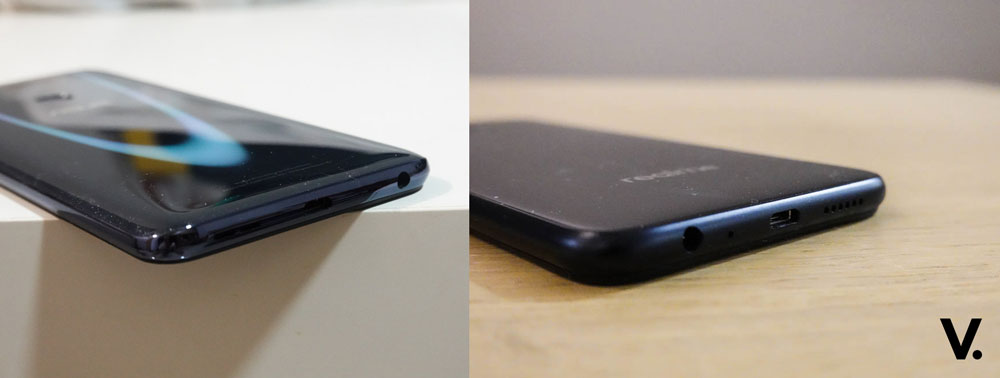 Verdict
Verdict
All in all, both the ASUS ZenFone Max Pro M2 and the Realme 2 Pro offer real bang for your buck — giving you a good balance of performance and features, wrapped up in good looking design. Both devices are also priced really close to each other with the ZenFone Max Pro M2 priced at MYR859 for the 4GB + 64GB storage variant and MYR999 for the 6GB + 64GB storage variant. The Realme 2 Pro on the hand, costs MYR849 for the 4GB + 64GB storage model, MYR949 for the 6GB + 64GB storage model and MYR1,099 for the 8GB + 128GB storage model.
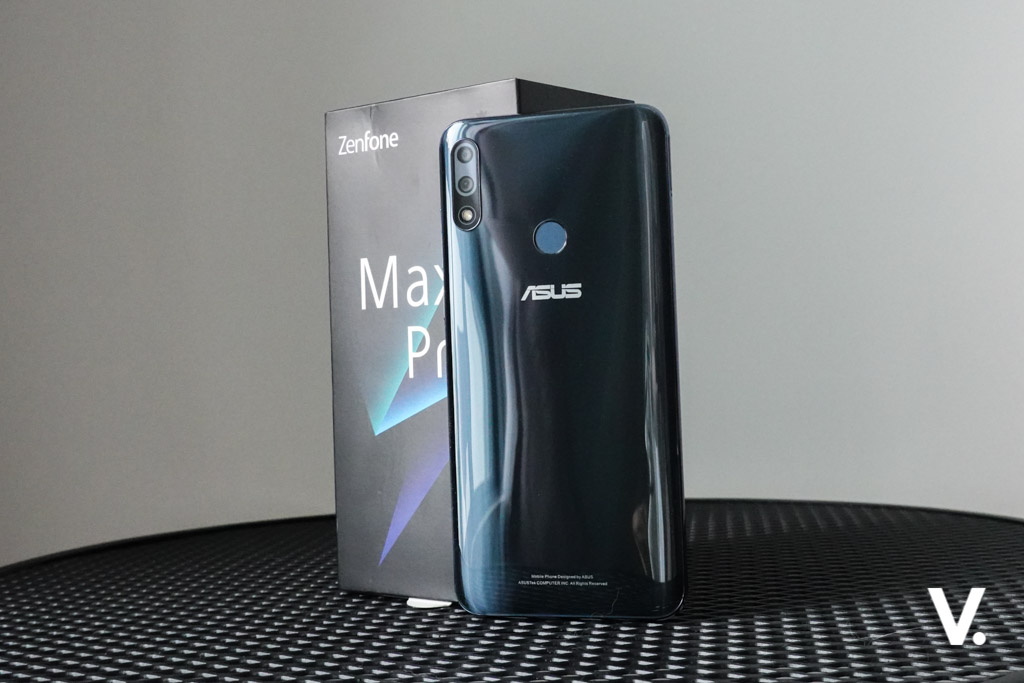 With prices like that, both devices make for a compelling purchase but personally I would still pick the ASUS ZenFone Max Pro M2 due to its larger 5,000mAh battery and near stock Android experience.
With prices like that, both devices make for a compelling purchase but personally I would still pick the ASUS ZenFone Max Pro M2 due to its larger 5,000mAh battery and near stock Android experience.


